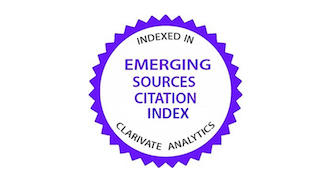Sistemas agroforestales cafetaleros: aproximaciones para la caracterización de sombra y microclima en Loja, Ecuador
DOI:
https://doi.org/10.15517/4ssgm196Palabras clave:
café, diversidad florística, especies de sombra, diferencias climáticas, índices de diversidadResumen
Introducción. El cultivo del café en Ecuador desempeña un papel importante en los ámbitos social, económico, ambiental y cultural. En la provincia de Loja, se cultiva la especie Coffea arabica, reconocida por su calidad, la cual se atribuye a las condiciones geográficas de la región y a las prácticas de cultivo bajo sistemas agroforestales (SAF) con distintas formas de manejo. Objetivo. Evaluar la composición, diversidad y valor de importancia de las especies de sombra e identificar las condiciones microclimáticas en sistemas agroforestales cafetaleros. Materiales y métodos. La investigación se llevó a cabo en tres zonas productoras de café en la provincia de Loja, Ecuador. En cada zona se establecieron y monitorearon parcelas de 20 × 30 m, de noviembre de 2017 a abril de 2019. Se calcularon los índices de valor de importancia, Shannon-Wiener y Simpson. Se registraron datos de las variables temperatura ambiental (°C), humedad relativa (%), velocidad del viento (m s-1) y porcentaje de cobertura (%) en el interior y el exterior de los SAF. Se utilizó correlación de Pearson entre las variables microclimáticas y el número de individuos que proveen sombra a los cafetales y su valor de importancia, para determinar la relación existente entre estos parámetros. Resultados. Las zonas cafetaleras mostraron diversidad arbórea significativa en términos de familias, géneros y especies de sombra. Las especies comunes pertenecieron a los géneros Citrus e Inga. En cuanto al microclima, se observaron diferencias en la temperatura (entre −4,23 °C y 2,23 °C) y la humedad relativa (entre 0 % y 10,54 %) en comparación con las áreas expuestas al pleno sol. Conclusiones. Los SAF cafetaleros modifican las condiciones ambientales entre el interior y el exterior de las áreas evaluadas, las cuales se ven afectadas por la cantidad de especies de cobertura que forman parte de los sistemas.
Referencias
Aerts, R., Geeraert, L., Berecha, G., Hundera, K., Muys, B., De Kort, H., & Honnay, O. (2017). Conserving wild Arabica coffee: Emerging threats and opportunities. Agriculture, Ecosystems & Environment, 237(2017), 75-79. http://dx.doi.org/10.1016/j.agee.2016.12.023
Alanya Cano, J. N. (2018). Evaluar el efecto de la temperatura y la velocidad de aire en el secado-convectivo de pulpa de café, Lima-2018 [Tesis de grado, Universidad César Vallejo]. Repositorio UCV-Institucional. https://repositorio.ucv.edu.pe/handle/20.500.12692/27950
Alvarado, M., & Benavidez-Silva, C. (2022). Cambio y continuidad en la valorización del espacio agrario de Loja (1.ª ed.). Sistema de Investigación sobre la Problemática Agraria en Ecuador.
Amadu, F. O., Miller, D. C., & McNamara, P. E. (2020). Agroforestry as a pathway to agricultural yield impacts in climate-smart agriculture investments: evidence from southern Malawi. Ecological Economics, 167, Article 106443. https://doi.org/10.1016/j.ecolecon.2019.106443
Ángel Sánchez, Y. K., Pimentel Tapia, M. E., & Suárez Salazar, J. C. (2017). Importancia cultural de vegetación arbórea en sistemas ganaderos del municipio de San Vicente del Caguán, Colombia. Revista U.D.C.A Actualidad & Divulgación Científica, 20(2), 393-401. https://doi.org/10.31910/rudca.v20.n2.2017.397
Apuri, I., Peprah, K., & Achana, G. T. W. (2018). Climate change adaptation through agroforestry: the case of Kassena Nankana West District, Ghana. Environmental Development, 28, 32-41. https://doi.org/10.1016/j.envdev.2018.09.002
Asfaw, A., & Zewudie, S. (2021). Soil macrofauna abundance, biomass and selected soil properties in the home garden and coffee-based agroforestry systems at Wondo Genet, Ethiopia. Environmental and Sustainability Indicators, 12, Article 100153. https://doi.org/10.1016/j.indic.2021.100153
Awazi, N. P., Tchamba, M. N., Temgoua, L. F., & Tientcheu-Avana, M.-L. (2022). Agroforestry as an adaptation option to climate change in Cameroon: assessing farmers’ preferences. Agricultural Research, 11, 309-320. https://doi.org/10.1007/s40003-021-00562-y
Awazi, N. P., Tientcheu-Avana, M.-L., Temgoua, L. F., Tsufac, A. R., Forje, G. W., Cedric, C. D., Nfornkah, B. N., & Tchamba, M. N. (2024). Agroforestry-based bioeconomy transition in Cameroon: realities and the way forward. In K. Singh, M. Cezar Ribeiro & Ö. Calicioglu (Eds.), Biodiversity and Bioeconomy (pp. 295-324). Elsevier. https://doi.org/10.1016/B978-0-323-95482-2.00014-6
Azevedo de Melo, N., Minuzzi Delevati, D., Ben da Costa, A., & Lobo, E. A. (2021). The use of phytosociology to evaluate the efficiency of headwater preservation areas in the Andreas Stream Hydrographic Basin, RS, Brazil. Ecological Indicators, 129, Article 107904. https://doi.org/10.1016/j.ecolind.2021.107904
Bunn, C., Läderach, P., Ovalle Rivera, O., & Kirschke, D. (2015). A bitter cup: climate change profile of global production of Arabica and Robusta coffee. Climatic Change, 129, 89-101. https://doi.org/10.1007/s10584-014-1306-x
Campo, A. M., & Duval, V. S. (2014). Diversidad y valor de importancia para la conservación de la vegetación natural. Parque Nacional Lihué Calel (Argentina). Anales de Geografía de La Universidad Complutense, 34(2), 25-42. https://doi.org/10.5209/rev_AGUC.2014.v34.n2.47071
Cassamo, C. T., Draper, D., Romeiras, M. M., Marques, I., Chiulele, R., Rodrigues, M., Stalmans, M., Partelli, F. L., Ribeiro-Barros, A., & Ramalho, J. C. (2023). Impact of climate changes in the suitable areas for Coffea arabica L. production in Mozambique: agroforestry as an alternative management system to strengthen crop sustainability. Agriculture, Ecosystems & Environment, 346, Article 108341. https://doi.org/10.1016/j.agee.2022.108341
Das, D. S., Dash, S. S., Maity, D., & Rawat, D. S. (2021). Population structure and regeneration status of tree species in old growth Abies pindrow dominant forest: a case study from western Himalaya, India. Trees, Forests and People, 5, Article 100101. https://doi.org/10.1016/j.tfp.2021.100101
De Souza Barbosa, R., Silva do Vale, R., Schwartz, G., Rocha Martins, W. B., Santos Ribeiro, S., De Matos Rodrigues, J. I., Costa Ferreira, G., & Moreira Barbosa, V. (2022). Restoration of degraded areas after bauxite mining in the eastern Amazon: which method to apply? Ecological Engineering, 180, Article 106639. https://doi.org/10.1016/j.ecoleng.2022.106639
Delgado Vargas, I. A., Ballesteros Possú, W., & Arellano Chungana, V. (2022). Agrobiodiversidad de leñosas multipropósito en sistemas productivos cafeteros. Revista de Investigación Agraria y Ambiental, 13(2), 67-80. https://doi.org/10.22490/21456453.4741
Durigan, G., Franco, G. A. D. C., Saito, M., & Baitello, J. B. (2000). Estrutura e diversidade do componente arbóreo da floresta na Estação Ecológica dos Caetetus, Gália, SP. Revista Brasileira de Botânica, 23(4), 371-383. https://doi.org/10.1590/S0100-84042000000400003
Encalada Córdova, M., Soto Carreño, F., & Morales Guevara, D. (2016). Crecimiento de posturas de cafeto (Coffea arabica L.) con cuatro niveles de sombra en dos condiciones edafoclimáticas de Ecuador. Cultivos Tropicales, 37(2), 72-78. http://dx.doi.org/10.13140/RG.2.1.4335.7681
García Mayoral, L. E., Valdez Hernández, J. I., Luna Cavazos, M., & López Morgado, R. (2015). Estructura y diversidad arbórea en sistemas agroforestales de café en la Sierra de Atoyac, Veracruz. Madera y Bosques, 21(3), 69-82. https://doi.org/10.21829/myb.2015.213457
Getachew, M., Verheyen, K., Tolassa, K., Tack, A. J. M., Hylander, K., Ayalew, B., Boeckx, P., Landuyt, D., & De Frenne, P. (2023). Effects of shade tree species on soil biogeochemistry and coffee bean quality in plantation coffee. Agriculture, Ecosystems & Environment, 347, Article 108354. https://doi.org/10.1016/j.agee.2023.108354
Gholizadeh, H., Dixon, A. P., Pan, K. H., McMillan, N. A., Hamilton, R. G., Fuhlendorf, S. D., Cavender-Bares, J., & Gamon, J. A. (2022). Using airborne and DESIS imaging spectroscopy to map plant diversity across the largest contiguous tract of tallgrass prairie on earth. Remote Sensing of Environment, 281, Article 113254. https://doi.org/10.1016/j.rse.2022.113254
Golicz, K., Bellingrath-Kimura, S., Breuer, L., & Wartenberg, A. C. (2022). Carbon accounting in European agroforestry systems – key research gaps and data needs. Current Research in Environmental Sustainability, 4, Article 100134. https://doi.org/10.1016/j.crsust.2022.100134
Gomes, L. C., Bianchi, F. J. J. A., Cardoso, I. M., Fernandes, R. B. A., Fernandes Filho, E. I., & Schulte, R. P. O. (2020). Agroforestry systems can mitigate the impacts of climate change on coffee production: a spatially explicit assessment in Brazil. Agriculture, Ecosystems & Environment, 294, Article 106858. https://doi.org/10.1016/j.agee.2020.106858
Granados Montero, M. M. (2015). Estudio de la epidemiología y alternativas de manejo agroecológico del ojo de gallo (Mycena citricolor) en cafeto bajo sistemas agroforestales en Costa Rica [Tesis doctoral, Universidad de Costa Rica]. Sistema de Bibliotecas de la Universidad de Costa Rica. https://agritrop.cirad.fr/580115/1/TESIS_MILAGRO_GRANADOS_Mycena_citricolor.pdf
Gregorius, H. R., & Gillet, E. M. (2008). Generalized Simpson-diversity. Ecological Modelling, 211(1-2), 90-96. https://doi.org/10.1016/j.ecolmodel.2007.08.026
Higuchi, N., Dos Santos, J., Ribeiro, R. J., Minette, L., & Biot, Y. (1998). Biomassa da parte aérea da vegetação da Floresta Tropical úmida de terra-firme da Amazônia Brasileira. Acta Amazonica, 28(2), 153-165. https://doi.org/10.1590/1809-43921998282166
Jaramillo Díaz, N., Aguirre Mendoza, Z., & Yaguana Puglla, C. (2018). Componente florístico del bosque seco, sector Bramaderos, parroquia Guachanama, cantón Paltas, suroccidente de la provincia de Loja, Ecuador. Arnaldoa, 25(1), 87-104. http://doi.org/10.22497/arnaldoa.251.25105
Jezeer, R. E., Santos, M. J., Verweij, P. A., Boot, R. G. A., & Clough, Y. (2019). Benefits for multiple ecosystem services in Peruvian coffee agroforestry systems without reducing yield. Ecosystem Services, 40, Article 101033. https://doi.org/10.1016/j.ecoser.2019.101033
Kindt, R., & Coe, R. (2010). Tree diversity analysis. a manual and software for common statistical methods for ecological and biodiversity studies. World Agroforestry Centre.
Kletty, F., Rozan, A., & Habold, C. (2023). Biodiversity in temperate silvoarable systems: a systematic review. Agriculture, Ecosystems & Environment, 351, Article 108480. https://doi.org/10.1016/j.agee.2023.108480
Lalani, B., Lanza, G., Leiva, B., Mercado, L., & Haggar, J. (2024). Shade versus intensification: trade-off or synergy for profitability in coffee agroforestry systems? Agricultural Systems, 214, Article 103814. https://doi.org/10.1016/j.agsy.2023.103814
Lara-Estrada, L., Rasche, L., & Schneider, U. A. (2023). Exploring the cooling effect of shading for climate change adaptation in coffee areas. Climate Risk Management, 42, Article 100562. https://doi.org/10.1016/j.crm.2023.100562
Lasco, R. D., Delfino, R. J. P., Catacutan, D. C., Simelton, E. S., & Wilson, D. M. (2014). Climate risk adaptation by smallholder farmers: the roles of trees and agroforestry. Current Opinion in Environmental Sustainability, 6, 83-88. https://doi.org/10.1016/j.cosust.2013.11.013
Lokonon, B. E., Gbemavo, C. D. S. J., Sodote, F. E., Manda, L., Glèlè Kakaï, R., & Sinsin, B. (2022). Effect of provenance on population structure and regeneration of six multiple-use tree species along Ouémé catchment in Benin: Implications for conservation. Trees, Forests and People, 7, Article 100206. https://doi.org/10.1016/j.tfp.2022.100206
López-Bravo, D. F., Virginio-Filho, E. de M., & Avelino, J. (2012). Shade is conducive to coffee rust as compared to full sun exposure under standardized fruit load conditions. Crop Protection, 38, 21-29. https://doi.org/10.1016/j.cropro.2012.03.011
López-Ferrer, U. del C., Brito-Vega, H., López-Morales, D., Salaya-Domínguez, J. M., & Gómez-Méndez, E. (2017). Papel de Trichoderma en los sistemas agroforestales-cacaotal como un agente antagónico. Tropical and Subtropical Agroecosystems, 20(1), 91-100. http://dx.doi.org/10.56369/tsaes.2278
Luedeling, E., Kindt, R., Huth, N. I., & Koenig, K. (2014). Agroforestry systems in a changing climate — challenges in projecting future performance. Current Opinion in Environmental Sustainability, 6, 1-7. https://doi.org/10.1016/j.cosust.2013.07.013
Macedo Pezzopane, J. R., De Souza, P. S., De Souza Rolim, G., & Boller Gallo, P. (2011). Microclimate in coffee plantation grown under grevillea trees shading. Acta Scientiarum. Agronomy, 33(2), 201-206. https://doi.org/10.4025/actasciagron.v33i2.7065
Marín-Garza, T., Gómez-Merino, F. C., Aguilar-Rivera, N., Murguía-González, J., Trejo-Téllez, L. I., Pastelín-Solano, M. C., & Castañeda-Castro, O. (2018). Variaciones en área foliar y concentraciones de clorofilas y nutrimentos esenciales en hojas de café robusta (Coffea canephora P.) durante un ciclo anual. Agro Productividad, 11(4), 36-41. https://doi.org/10.32854/agrop.v11i4.266
Merle, I., Villarreyna-Acuña, R., Ribeyre, F., Roupsard, O., Cilas, C., & Avelino, J. (2022). Microclimate estimation under different coffee-based agroforestry systems using full-sun weather data and shade tree characteristics. European Journal of Agronomy, 132, Article 126396. https://doi.org/10.1016/j.eja.2021.126396
Molla, A. (2015). Effect of tree shade on coffee crop production. Journal of Sustainable Development, 8(9), 66-70. https://doi.org/10.5539/jsd.v8n9p66
Momeni, E., & Antipova, A. (2022). A micro-level analysis of commuting and urban land using the Simpson’s index and socio-demographic factors. Applied Geography, 145, Article 102755. https://doi.org/10.1016/j.apgeog.2022.102755
Morais, H., Henrique Caramori, P., Maria de Arruda Ribeiro, A., Carlos Gomes, J., & Sei Koguishi, M. (2006). Microclimatic characterization and productivity of coffee plants grown under shade of pigeon pea in Southern Brazil. Pesquisa Agropecuária Brasileira, 41(5), 763-770. https://doi.org/10.1590/S0100-204X2006000500007
Nyaruai, M. A., Musingi, J. K., & Wambua, B. N. (2018). The potential of agroforestry as an adaptation strategy to mitigate the impacts of climate change: a case study of Kiine Community, Kenya. Nusantara Bioscience, 10(3), 170-177. https://doi.org/10.13057/nusbiosci/n100307
Oduniyi, O. S., & Tekana, S. S. (2019). Adoption of agroforestry practices and climate change mitigation strategies in North West province of South Africa. International Journal of Climate Change Strategies and Management, 11(5), 716-729. https://doi.org/10.1108/IJCCSM-02-2019-0009
Parray, S. Y., Koul, B., & Shah, M. P. (2021). Comparative assessment of dominant macrophytes and limnological parameters of Dal Lake and Chatlam wetlands in the Union territory of Jammu & Kashmir, India. Environmental Technology & Innovation, 24, Article 101978. https://doi.org/10.1016/j.eti.2021.101978
Pereira Coltri, P., Silveira Pinto, H., Ribeiro do Valle Gonçalves, R., Zullo Junior, J., & Dubreuil, V. (2019). Low levels of shade and climate change adaptation of Arabica coffee in southeastern Brazil. Heliyon, 5(2), Article e01263. https://doi.org/10.1016/j.heliyon.2019.e01263
Quandt, A., Neufeldt, H., & McCabe, J. T. (2019). Building livelihood resilience: what role does agroforestry play? Climate and Development, 11(6), 485-500. https://doi.org/10.1080/17565529.2018.1447903
R Core Team. (2020). A language and environment for statistical computing. R Foundation for Statistical Computing. https://www.r-project.org/
Rapidel, B., Ripoche, A., Allinne, C., Metay, A., Deheuvels, O., Lamanda, N., Blazy, J.-M., Valdés-Gómez, H., & Gary, C. (2015). Analysis of ecosystem services trade-offs to design agroecosystems with perennial crops. Agronomy for Sustainable Development, 35, 1373-1390. https://doi.org/10.1007/s13593-015-0317-y
Rigal, C., Xu, J., Hu, G., Qiu, M., & Vaast, P. (2020). Coffee production during the transition period from monoculture to agroforestry systems in near optimal growing conditions, in Yunnan Province. Agricultural Systems, 177, Article 102696. https://doi.org/10.1016/j.agsy.2019.102696
Román Miranda, M. L., Mora Santacruz, A., & González Cueva, A. G. (2016). Sistemas agroforestales con especies de importancia maderable y no maderable, en el trópico seco de México. Avances en Investigación Agropecuaria, 20(2), 53-69. https://www.redalyc.org/journal/837/83754343006/83754343006.pdf
Rosenstock, T. S., Dawson, I. K., Aynekulu, E., Chomba, S., Degrande, A., Fornace, K., Jamnadass, R., Kimaro, A., Kindt, R., Lamanna, C., Malesu, M., Mausch, K., McMullin, S., Murage, P., Namoi, N., Njenga, M., Nyoka, I., Paez Valencia, A. M., Sola, P., … Steward, P. (2019). A planetary health perspective on agroforestry in Sub-Saharan Africa. One Earth, 1(3), 330-344. https://doi.org/10.1016/j.oneear.2019.10.017
Roy, D., Sarker, S., Mustari, S., Roy, K., Khan, M. A. R., & Latifa, G. A. (2022). Exploration of fishing activities, fish species assemblage and diversity status of the largest wetland (Arial Beel) near the capital city in Bangladesh: Implications and conservation. Acta Ecologica Sinica, 42(3), 243-253. https://doi.org/10.1016/j.chnaes.2022.03.004
Sarmiento-Soler, A., Rötter, R. P., Hoffmann, M. P., Jassogne, L., Van Asten, P., Graefe, S., & Vaast, P. (2022). Disentangling effects of altitude and shade cover on coffee fruit dynamics and vegetative growth in smallholder coffee systems. Agriculture, Ecosystems & Environment, 326, Article 107786. https://doi.org/10.1016/j.agee.2021.107786
Siles, P., Harmand, J. M., & Vaast, P. (2010). Effects of Inga densiflora on the microclimate of coffee (Coffea arabica L.) and overall biomass under optimal growing conditions in Costa Rica. Agroforestry Systems, 78(3), 269-286. https://doi.org/10.1007/s10457-009-9241-y
Sofi, I. I., Zargar, S. A., Ganie, A. H., & Shah, M. A. (2022). Distribution dynamics of Arnebia euchroma (Royle) I.M.Johnst. and associated plant communities in Trans-Himalayan Ladakh region in relation to local livelihoods under climate change. Trees, Forests and People, 7, Article 100213. https://doi.org/10.1016/j.tfp.2022.100213
Solomon, T., Derero, A., & Lemenih, M. (2022). Woody species regeneration through exclosure and perception of local community on mountain Damota, Wolaita, Ethiopia. Trees, Forests and People, 8, Article 100234. https://doi.org/10.1016/j.tfp.2022.100234
Soto-Pinto, L., Perfecto, I., Castillo-Hernandez, J., & Caballero-Nieto, J. (2000). Shade effect on coffee production at the northern Tzeltal zone of the state of Chiapas, Mexico. Agriculture, Ecosystems & Environment, 80(1-2), 61-69. https://doi.org/10.1016/S0167-8809(00)00134-1
Steinfeld, J. P., Miatton, M., Creamer, R. E., Ehbrecht, M., Valencia, V., Ballester, M. V. R., & Bianchi, F. J. J. A. (2024). Identifying agroforestry characteristics for enhanced nutrient cycling potential in Brazil. Agriculture, Ecosystems & Environment, 362, Article 108828. https://doi.org/10.1016/j.agee.2023.108828
Strong, W. L. (2016). Biased richness and evenness relationships within Shannon-Wiener index values. Ecological Indicators, 67, 703-713. https://doi.org/10.1016/j.ecolind.2016.03.043
Suarez, A., & Gwozdz, W. (2023). On the relation between monocultures and ecosystem services in the Global South: a review. Biological Conservation, 278, Article 109870. https://doi.org/10.1016/j.biocon.2022.109870
Subburayalu, S., & Sydnor, T. D. (2012). Assessing street tree diversity in four Ohio communities using the weighted Simpson index. Landscape and Urban Planning, 106(1), 44-50. https://doi.org/10.1016/j.landurbplan.2012.02.004
Tilinti, B., Negash, M., Asfaw, Z., & Woldeamanuel, T. (2025). Variations in carbon stocks across traditional and improved agroforestry in reference to agroforestry and households’ characteristics in Southeastern Ethiopia. Heliyon, 11(2), Article e42127. https://doi.org/10.1016/j.heliyon.2025.e42127
Toledo, V. M., & Moguel, P. (2012). Coffee and sustainability: the multiple values of traditional shaded coffee. Journal of Sustainable Agriculture, 36(3), 353-377. https://doi.org/10.1080/10440046.2011.583719
Tschora, H., & Cherubini, F. (2020). Co-benefits and trade-offs of agroforestry for climate change mitigation and other sustainability goals in West Africa. Global Ecology and Conservation, 22, Article e00919. https://doi.org/10.1016/j.gecco.2020.e00919
Villarreyna, R. A., Avelino, J., & Cerda, R. (2020). Adaptación basada en ecosistemas: efecto de los árboles de sombra sobre servicios ecosistémicos en cafetales. Agronomía Mesoamericana, 31(2), 499-516. https://doi.org/10.15517/am.v31i2.37591
Villavicencio-Enríquez, L. (2013). Caracterización agroforestal en sistemas de café tradicional y rústico, en San Miguel, Veracruz, México. Revista Chapingo. Serie Ciencias Forestales y del Ambiente, 19(1), 67-80. https://doi.org/10.5154/r.rchscfa.2010.08.051
Virginio Filho, E. D. M., Caicedo Vargas, C. E., & Astorga Domian, C. (2014). Agroforestería sostenible en la Amazonía ecuatoriana: fragilidad de los suelos en la Amazonía ecuatoriana y potenciales alternativas agroforestales para el manejo sostenible. Instituto Nacional de Investigaciones Agropecuarias.
Wang, X., Shen, L., Liu, T., Wei, W., Zhang, S., Li, L., & Zhang, W. (2022). Microclimate, yield, and income of a jujube–cotton agroforestry system in Xinjiang, China. Industrial Crops and Products, 182(221), Article 114941. https://doi.org/10.1016/j.indcrop.2022.114941
Yahya, M. S., Atikah, S. N., Mukri, I., Sanusi, R., Norhisham, A. R., & Azhar, B. (2022). Agroforestry orchards support greater avian biodiversity than monoculture oil palm and rubber tree plantations. Forest Ecology and Management, 513, Article 120177. https://doi.org/10.1016/j.foreco.2022.120177
Yemata, G., & Haregewoien, G. (2022). Floristic composition, structure and regeneration status of woody plant species in Northwest Ethiopia. Trees, Forests and People, 9, Article 100291. https://doi.org/10.1016/j.tfp.2022.100291
Zapata Arango, P. C., Andrade Castañeda, H. J., & Nieto Abril, A. K. (2017). Comportamiento ecofisiológico del cafeto (Coffea arabica L.) CV. Castillo en sistemas agroforestales de Tibacuy, Cundinamarca. Revista U.D.C.A Actualidad & Divulgación Científica, 20(2), 61-70. https://doi.org/10.31910/rudca.v20.n1.2017.63
Zignol, F., Kjellström, E., Hylander, K., Ayalew, B., Zewdie, B., Rodríguez-Gijón, A., & Tack, A. J. M. (2023). The understory microclimate in agroforestry now and in the future – a case study of Arabica coffee in its native range. Agricultural and Forest Meteorology, 340, Article 109586. https://doi.org/10.1016/j.agrformet.2023.109586

Archivos adicionales
Publicado
Licencia
Derechos de autor 2025 Max Encalada-Córdova, César Benavidez-Silva, Narcisa Urgiles-Gómez, Klever Chamba-Caillagua (Autor/a)

Esta obra está bajo una licencia internacional Creative Commons Atribución-NoComercial-SinDerivadas 4.0.
1. Política propuesta para revistas de acceso abierto
Los autores/as que publiquen en esta revista aceptan las siguientes condiciones:
- Los autores/as conservan los derechos morales de autor y ceden a la revista el derecho de la primera publicación, con el trabajo registrado con la licencia de atribución, no comercial y sin obra derivada de Creative Commons, que permite a terceros utilizar lo publicado siempre que mencionen la autoría del trabajo y a la primera publicación en esta revista, no se puede hacer uso de la obra con propósitos comerciales y no se puede utilizar las publicaciones para remezclar, transformar o crear otra obra.
- Los autores/as pueden realizar otros acuerdos contractuales independientes y adicionales para la distribución no exclusiva de la versión del artículo publicado en esta revista (p. ej., incluirlo en un repositorio institucional o publicarlo en un libro) siempre que indiquen claramente que el trabajo se publicó por primera vez en esta revista.
- Se permite y recomienda a los autores/as a publicar su trabajo en Internet (por ejemplo en páginas institucionales o personales) antes y durante el proceso de revisión y publicación, ya que puede conducir a intercambios productivos y a una mayor y más rápida difusión del trabajo publicado (vea The Effect of Open Access).





























